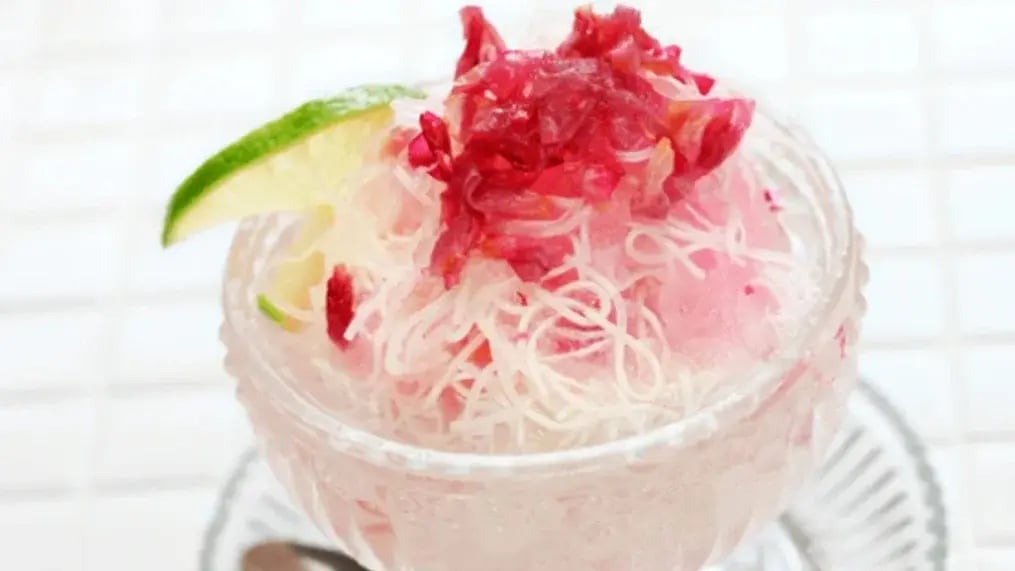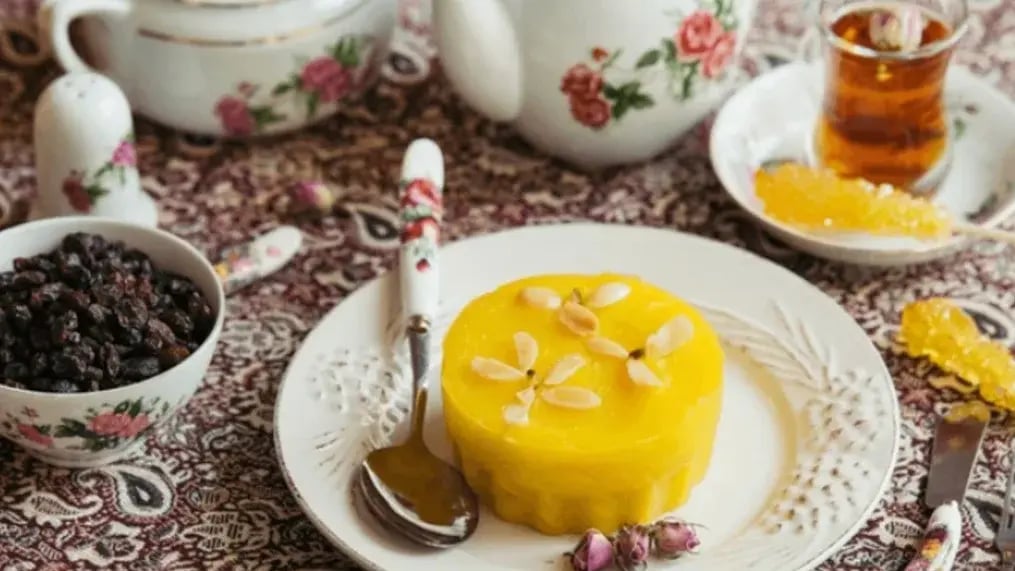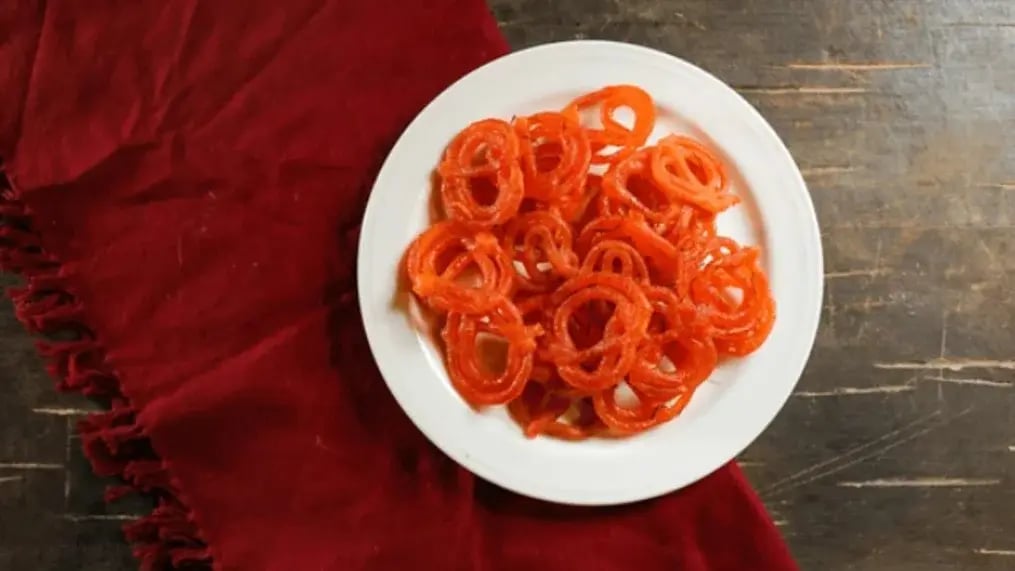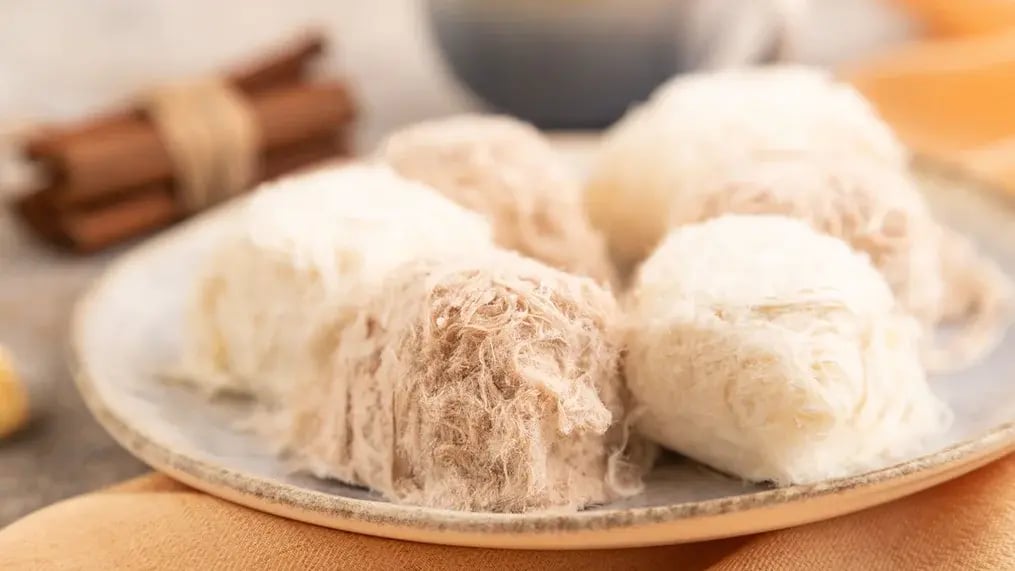- Home
- Articles
- Popular Desserts From Iran As Old As The Aryans And Mesopotamians: Easy Middle Eastern Dessert Recipes
Iran’s desserts are fragrant and not so often such a simple affair. Staying true to its Persian influences, lots of its desserts are flavored with saffron, cardamom and rose.

From the heartland of Persian cuisine, Iran boasts a rich blend of flavors that combines the best of pistachios, saffron, rose and cardamom and more than often their confections, heavily rely upon flavored sugar syrup. Iran’s food heritage dates back more than 2000 years and the world’s oldest special sweets can be traced back to the streets and shops of this lively city.
1. Faloodeh

Faloodeh is a traditional Iranian sorbet made with frozen sugar syrup infused with fragrant rose water and thin vermicelli noodles. This can be enhanced with the addition of lemon juice or a scoop of ice cream. This dessert is believed to have originated in the historic city of Shiraz, tracing its roots back over 2,000 years. In Iran, faloodeh is often served as a refreshing summer treat, drizzled with a variety of toppings like sweet cherry syrup, tangy lime juice, or chopped pistachios.
2. Sholeh zard

Sholeh zard is a fragrant saffron-infused ancient rice pudding that was traditionally reserved for special occasions. This revered dessert is crafted by first cooking rice in water, and then meticulously enhancing it with the precious threads of saffron and the sweetness of sugar. Beyond the base of sweet rice infused with saffron, sholeh zard often incorporates toppings like slivered almonds and spices like cardamom and cinnamon to enhance the taste of this simple rice pudding.
3. Gaz
Gaz is the Iranian variety of nougat which has a rich and storied history. While modern iterations often feature a blend of egg whites, sugar, and nuts, the original gaz had a slightly different composition. Its key ingredient was an exudate, or natural secretion, from an insect found on wild tamarisk trees. After collecting this raw material, confectioners would melt, sieve, and mix it with nuts, then infuse it with aromatic notes of rose water and saffron. However, even with the modern iterations, the essence of it remains – a soft, gooey nougat infused with the fragrance of roses and studded with crunchy pistachios and almonds.
4. Bastani sonnati
Bastani sonnati is a kind of Iranian ice cream that was first created around the turn of the 20th century by Akbar Mashti, the pioneering ice cream vendor in Tehran. At the heart of bastani sonnati is the inclusion of salep, a substance derived from wild orchids. In addition to the salep, rose water and saffron are used. Iranians often enjoy this treat in individual bowls, topped with a dusting of chopped pistachios, or sandwiched between two plain wafers, known as bastani nooni.
5. Sujuq
Sujuq is crafted through a meticulous process that takes nearly three months to complete, traditionally beginning in December. The making of sujuk involves a blend of starch, grape juice, and either almond or apricot kernels. The almonds are first soaked to remove their skins, then dried by stringing them on threads. The grape juice is simmered until a portion of the moisture has evaporated before being combined with the starch and the dried almond threads. The threads are then hung to dry, and this process is repeated multiple times by placing the sujuk in a doorway. For two months, as the sugar binds the confection, the sujuk is left to hang until it is finally ready for consumption, just in time for the Nowruz Eid celebration.
6. Zulbia

This is Iran’s version of Jalebi traces its origins back to Persia and is prepared by combining flour with yoghurt or ghee, along with baking soda or yeast, to create a batter. This batter is then carefully piped into circular patterns and fried in hot oil, resulting in a crisp, golden confection. These deep-fried squiggles are then drenched in syrup flavored with cardamom, rose water, saffron, honey, and orange blossoms. The deep yellow-orange hue of the sweet is often accentuated by a sprinkling of saffron threads or chopped pistachios.
7. Pashmak

Bearing a resemblance to cotton candy or even closer to dragon's beard candy, Pashmak is crafted by pulling a flavored sugar syrup, multiple times, resulting in multiple thin and fragile threads. The final product resembles delicate hair or wool, earning it the nickname "angel's hair." Pashmak can be flavored with a variety of ingredients, such as sesame, rose water, cardamom, orange blossom, saffron, vanilla, or pistachio. In Iran, pashmak is rarely consumed on its own but rather incorporated into other desserts. Its unusual and decorative appearance makes it a popular topping for cakes, ice creams, puddings, and even drinks.
More Like This
Popular Articles




Trending Web Stories
Curated Recipes

















